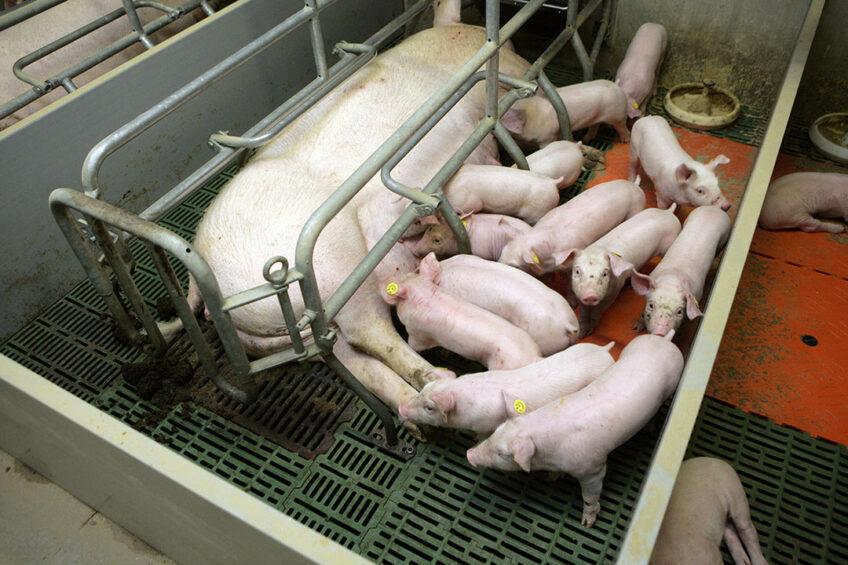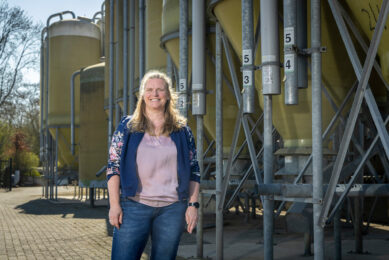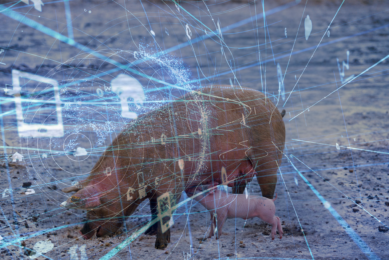Measuring sows’ water consumption yields valuable information

A sow’s water consumption yields valuable information about her state, explains pig welfare and housing expert Vivi Aarestrup Moustsen. Measuring water consumption therefore, is an important management tool.
A sow consists of approximately 50% water, and sow milk consists of approximately 80% water. A pig can lose almost all body fat or more than half its protein. A loss of 10% of the body’s water supply however, can be fatal.
Limited attention for sows’ water consumption
Water is important but it gets limited attention. Research into the sow’s need for water is often 30 to 40 years old. In the meantime, feed content has changed, the sows’ meat content has increased and sows have become high-prolific and higher yielding.
Maybe not surprisingly but very valuable, the sows’ water consumption gave us a lot of information about their states
The sow’s need for water can be estimated, but it is a challenge to measure water uptake, let alone water intake. Even measuring a sow’s water consumption can be difficult. But just because it is difficult, does not mean we should not try to do it. Knowing that something is highly likely is better than knowing nothing.
SEGES research
SEGES measured the water consumption of lactating sows at pen level in collaboration with a company and a commercial pig enterprise for close to a year. The sows were housed at a site with dry feed or at a site with liquid feed.
Maybe not surprisingly but very valuable, the sows’ water consumption gave us a lot of information about their states.
Examples of drinking behaviour
For example, it is well known that sows spend most of their time during farrowing lying down laterally. But how long have they been in a farrowing state? When sows lie down, they do not drink. This means that the amount of time they have not been drinking can indicate the length of the farrowing state.
Another example. Many managers with semi- or automated feeding systems monitor feeding to ensure sows stand up during feeding. But do the sows eat? If sows are dry-fed, they will drink during feeding, so observation of the drinking pattern at feeding times can indicate whether the sows are eating or not.
Calculating the necessary water intake
As the need for water for milk production can be calculated, it is possible to calculate the minimum water uptake needed. The water consumption must be at least the water uptake plus an amount to account for some spillage.
There was an indication that dry-fed sows with 4 or more stillborn piglets in the litter did not drink for a longer period of time than sows with less stillborn piglets
Results
We measured 17 L/day as the median the last 3 days before farrowing for dry-fed sows, and 12 L/day for the liquid-fed sows (table 1). This is more than observed in studies from the late 1980s, when amounts of 9 L/day were reported.
There was an indication that dry-fed sows with 4 or more stillborn piglets in the litter did not drink for a longer period of time than sows with less stillborn piglets.
For the liquid-fed sows, it appeared that sows with a higher water consumption weaned more piglets. However, we did not weigh the litters, so the quality of the piglets was not recorded.
Measuring water consumption at sow level: important management tool
We have previously reported about the challenges of using sows’ temperatures as an indicator of their physical state. It appears from these (although limited) data that using water consumption at an individual sow-level can be an important management tool. It gives real-time information, and can be obtained fairly easily from all lactating sows in a herd.











